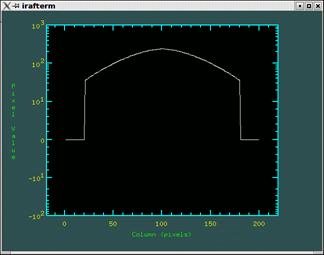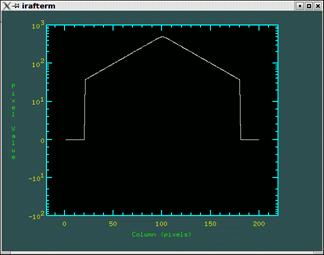
THE EXPONENTIAL FUNCTION. Used to describe galactic disks, the simplest of all formulae here. Written in linear units (e.g., counts in the detector), it looks like:

Some Musings on Galaxy Image Decomposition
(Or… things you must really know!)
As a way to clarify
my own thoughts I decided to create this page, but I am sure it is
going to be useful to many… This is organized in different parts.
First, I recall the main functions that describe the surface brightness
profiles of the galaxy components that are present, e.g., in BUDDA,
i.e., their mathematical and graphical description. After that, I
recall what boxy and disky isophotes mean in reality, as well as other
interesting configurations that can be studied using BUDDA, like, for
instance: barred galaxies, double-exponential disks, edge-on galaxies…I
will end some day with some other hints specifically to someone who
wants to run
BUDDA, although many are already described in the “How to use it” section (but not again here).

THE EXPONENTIAL FUNCTION. Used to describe galactic disks, the simplest of all formulae
here. Written in linear units (e.g., counts in the detector), it looks
like:


r
is the galactocentric radius [putting it more accurately, the length of
the semi-major axis of the (elliptical!) isophote], h the length scale
of the disk and 0 refers to central values. If the plot below at left
(in
linear units) was in magnitudes it would only contain a straight line
(see below). Thus, to find a first guess for h you can make a plot like
that (in magnitudes) and see where the brightness drops from the center
by approximately 1 mag, using the outer (exponential!) part of the
brightness profile of a disk galaxy.
Things
get a bit more complicated when dealing with edge-on disks (we have
more about that below). In this case one must consider the brightness
vertical dependence. Including that, then one has (assuming that the
disk may be described as isothermal):
![]()
This
assumes (fair enough!) that the vertical length scale z0 does not have
any dependence on r. The plot below at right shows how the sech2 function
looks like in linear units.
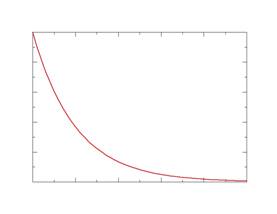
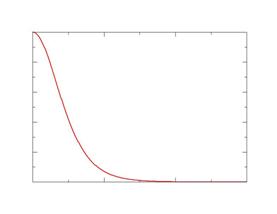
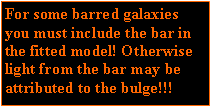

THE SÉRSIC FUNCTION. A very
versatile and useful expression!


Where
e refers to effective values and n is the famous Sérsic index.
When n
equals 4 the Sérsic function becomes the de Vaucouleurs
function; when
n equals 1 the Sérsic function becomes an exponential, and when
n
equals 0.5 it becomes a Gaussian! For values in the range 1-4 (see plot
below at left, from left to right), approximately, it is well suitable
to
describe from bulges in late-type spiral galaxies (or pseudo-bulges) to
bulges in early-type spirals (or classical bulges) and elliptical
galaxies. It is easy to realize that the larger the value of n the more
concentrated is the light (and mass!) of the bulge (or elliptical) in
the center.
The
effective radius of a galaxy is the one that contains half of the light
emitted by the galaxy. The numerical constants bn and cn are chosen so that the brightness at the effective radius is
the effective brightness, and they depend only on n.
You
may find the same function written in other ways, like:
![]()

Don’t
worry, they are all indeed the same… that only depends on whether you
use the effective or the central value for the brightness parameter,
and whether you choose the natural base (e) or the decimal one.
Note
that, for n=4, the difference between the central surface brightness
and the effective one is about 8 magnitudes, so this is useful also to
estimate a first guess for the effective parameters (see case above for
disks).
The
Sérsic function can also be suitable to describe bars,
considering
values in the range 0.4 to 1. (Values smaller than that may be
unphysical as the brightness would then drop in the center!) A bar in a
late-type galaxy can be well fitted by an exponential (n=1), whereas
bars in early-type galaxies have a flatter luminosity profile (n=0.6,
say). The plot below at right shows the Sérsic function for
n=0.4, 0.6, 0.8
and 1 (upwards).
Bars
are hard to fit… and on top of the Sérsic function you will
certainly
need boxy isophotes, generally with a somewhat high ellipticity. The
effective radius of the Sérsic function describing the bar must
also be
very well chosen, or better, carefully fitted. In many cases too, you
will need an outer cutoff radius. Below I describe in more details how
I fit bars with BUDDA, including very nice plots!
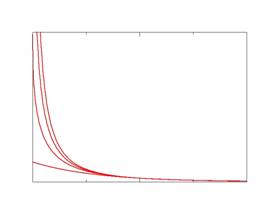
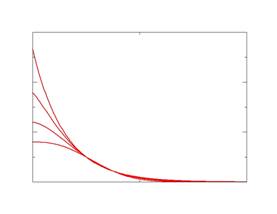

THE MOFFAT FUNCTION. It looks
pretty much like a Gaussian, but the Moffat function fits better the
effects of seeing caused by atmospheric turbulence because of its
longer tails. Hence, BUDDA uses it to describe central bright point
sources like an AGN or a stellar cluster. Of course the seeing effects
on the whole model fitted by the code are also taken into account using
the Moffat function. OK, so there it is:
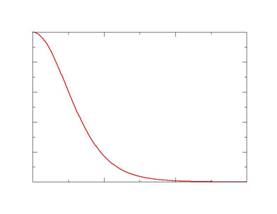

Here,
rd is related to
the seeing FWHM and n is normally set to 4.765. For n→∞ it becomes a Gaussian.
BOXY & DISKY ISOPHOTES (GENERALIZED
ELLIPSES). A generalized ellipse is described by
the following expression:
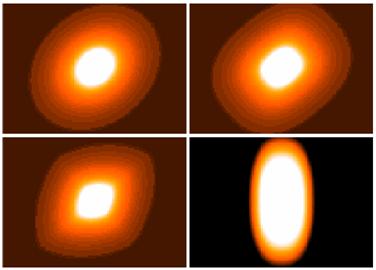

Where
q is the axial ratio (related to the ellipticity) and a pure ellipse
(top left panel of figure above) has c=0. For c>0 one has a boxy
ellipse, or isophote (top right panel). In this case there is a deficit of light in
the directions of the major and minor axes. For c<0 one gets a disky
isophote (bottom left panel), where there is an excess of light in
the directions of the major and minor axes.
The
ability to fit boxy or disky isophotes may be very important in studies
of elliptical galaxies, since it seems to exist a dichotomy between the
properties of boxy and disky
ellipticals. The former are radio-loud,
pressure-supported, and in high density environments, in contrast with
the latter.
Boxy
isophotes are also essential to fit bars. The bottom right panel shows
what could be a bar in an
early-type galaxy: eccentric, square and with a
flat luminosity profile.
THE FOUR COMPONENTS. The
figure below at left shows examples of the four
components BUDDA fits in a galaxy: the central bright source (top
left), the bulge (top right), the bar (an appropriate example of a bar in a
late-type galaxy, with a steep brightness profile
— bottom left), and the disk (bottom right). Of course, these are only
some examples! The variety one can have in the structure of a galaxy is
enormous, as is the parameter space of the properties of the four
structural components included in the code.
The
figure below at right represents how BUDDA sees a galaxy… (Note that
the
central bright source is there but you can not distinguish it since the
brightness and contrast settings of this figure make it immersed in the
bulge light. But then now you can better see the outer disk.)
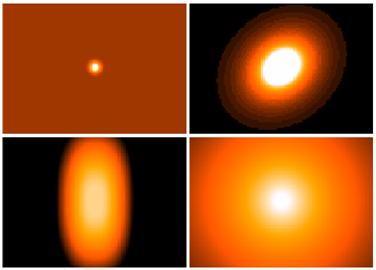
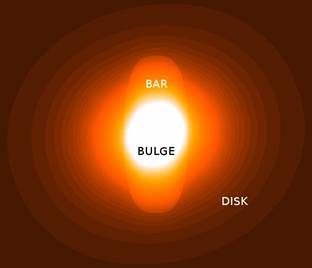
DOUBLE EXPONENTIAL DISKS. In the new version
of BUDDA the user has the choice to fit the galactic disk with a single
exponential function, or a double exponential, i.e., like two different
disks (inner and outer disks, say) that share the same position angle
and ellipticity, but have different central brightness and length
scales. This ability tends to become very useful since galaxies with
double exponential disks are being now frequently found with ever
deeper and finer images. In the figures below I present the two
distinct sorts of disks described by different inner and outer parts.
In the left figure below one can see what is traditionally called disk
truncation, i.e., the outer disk shows a steeper profile. In the figure
at right one sees what is being called anti-truncation, i.e., the outer
disk profile is shallower than that of the inner disk. These physical
properties may be related to a number of different processes, like bar
evolution, the stellar halo, late gas accretion, and galaxy harassment.
BUDDA also is able to fit edge-on disks (bottom figure below), also
with a single or a double exponential function.
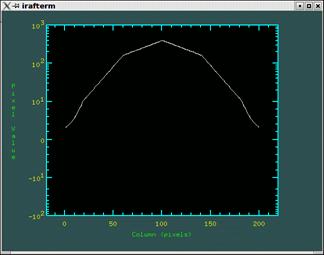
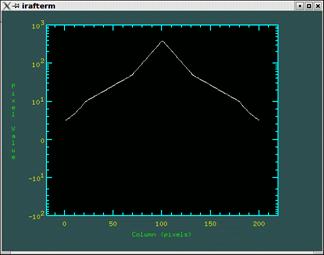
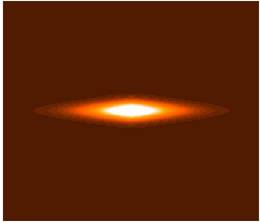
TWO DIFFERENT BARS. Bars come in two
distinct types: the ones in early-type disk galaxies show a flat
brightness profile (figure below at left), whereas those harbored by
late-type spirals show a steep (exponential) profile (below at right).
Both can be modeled by a Sérsic function like BUDDA does. This
different property may also be related to different physical processes,
like the disk building, star formation and the age of the bar itself.
These figures below show how BUDDA can fit these different sorts of
bars and also the brightness cutoff at the bar ends.
